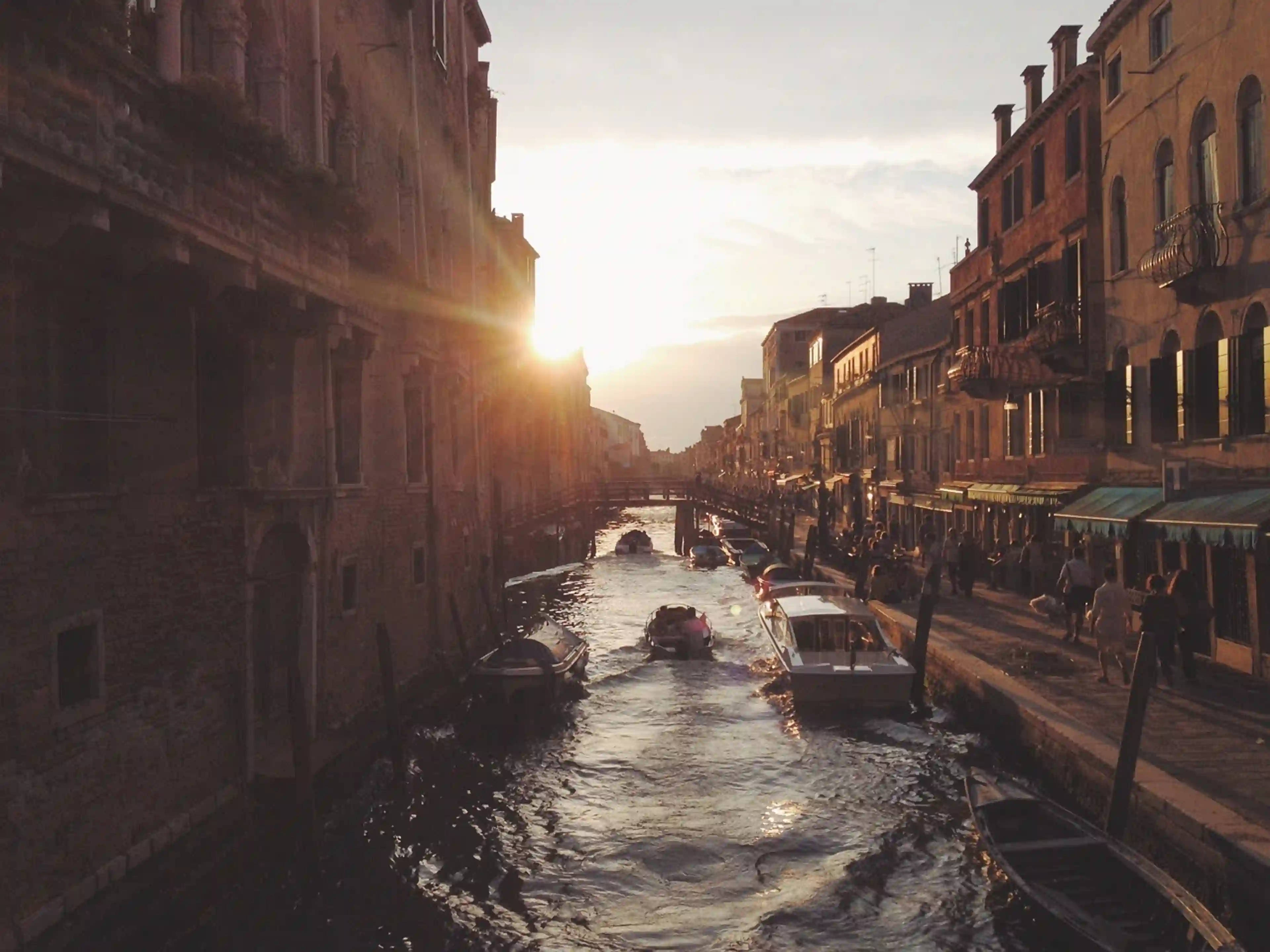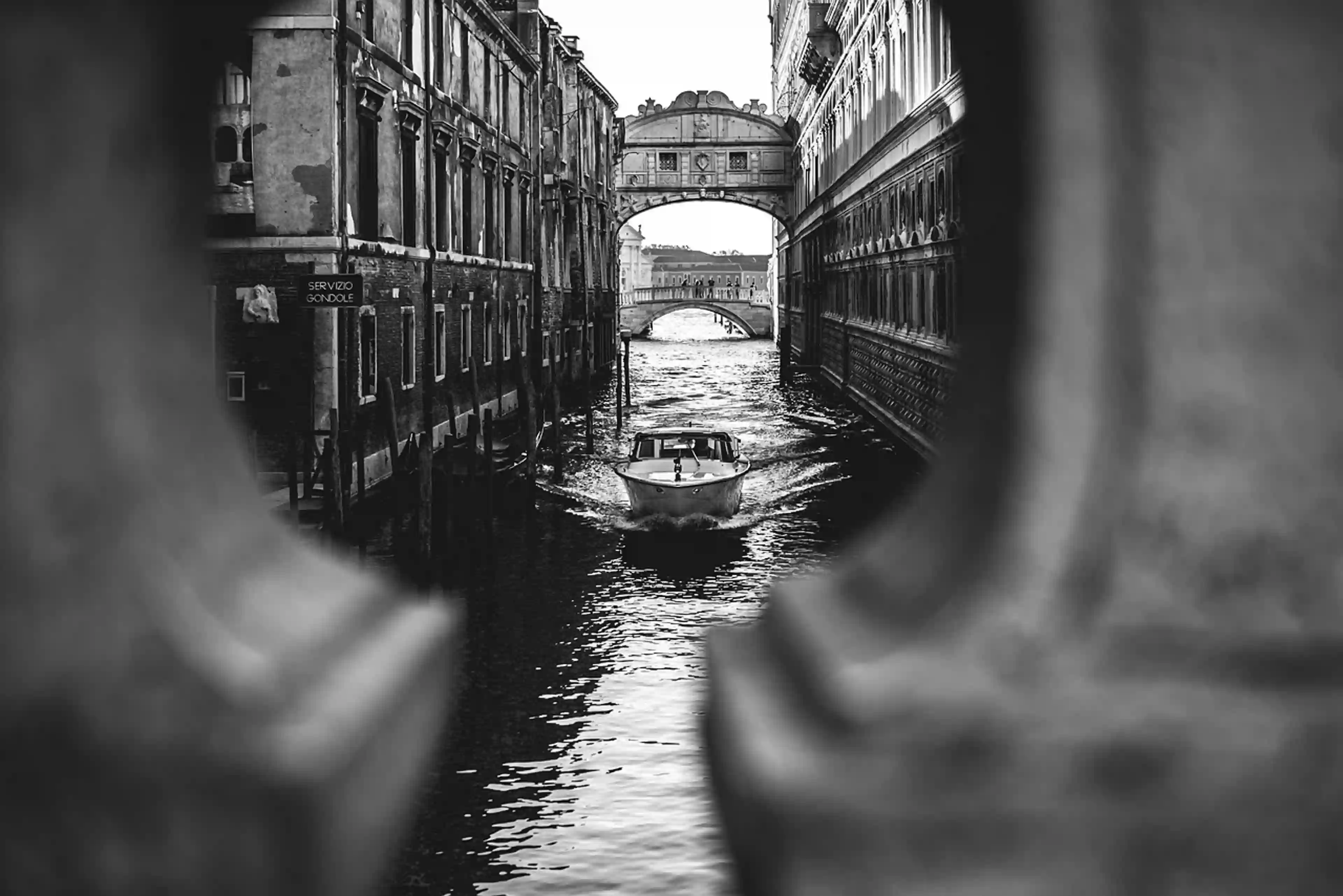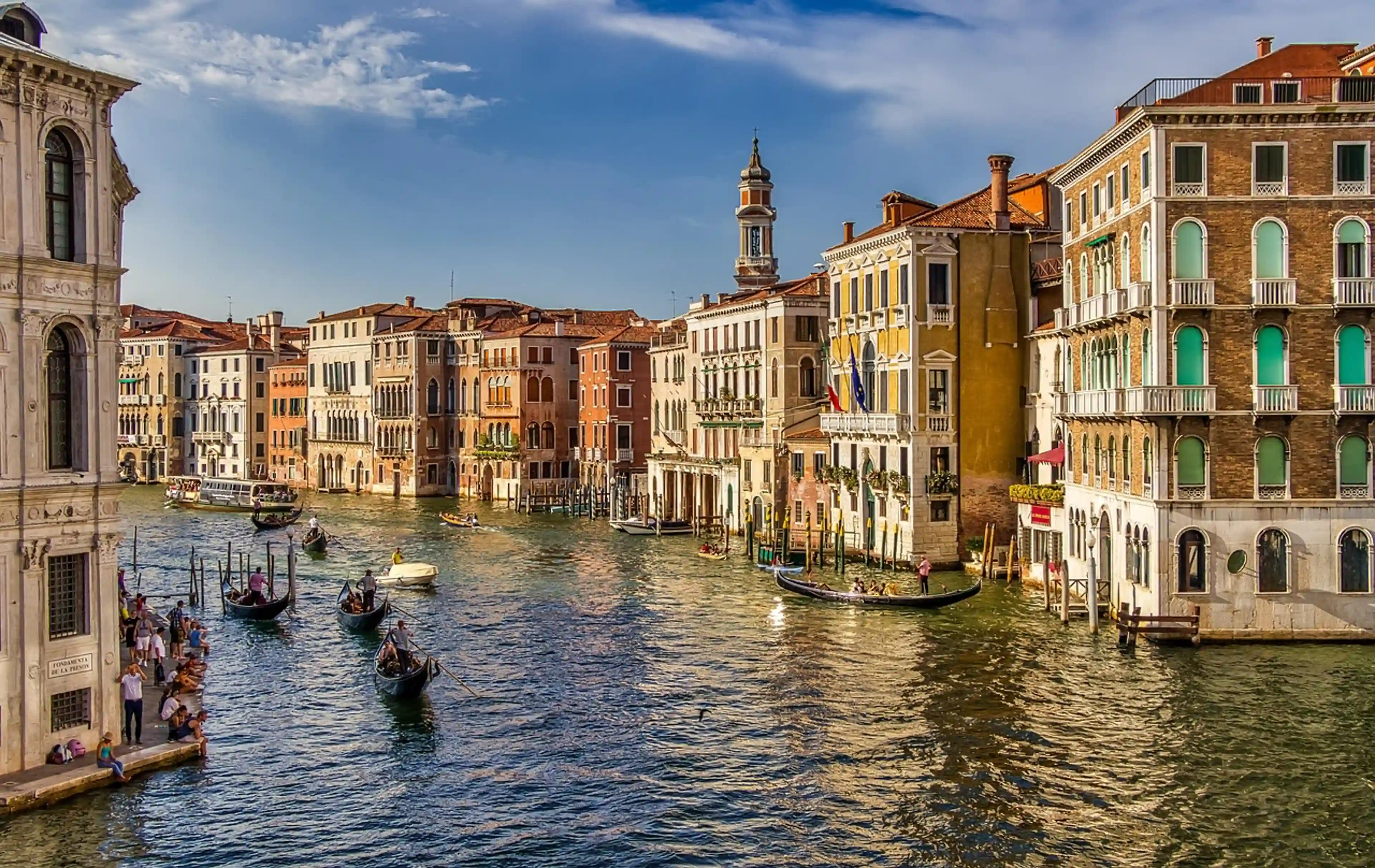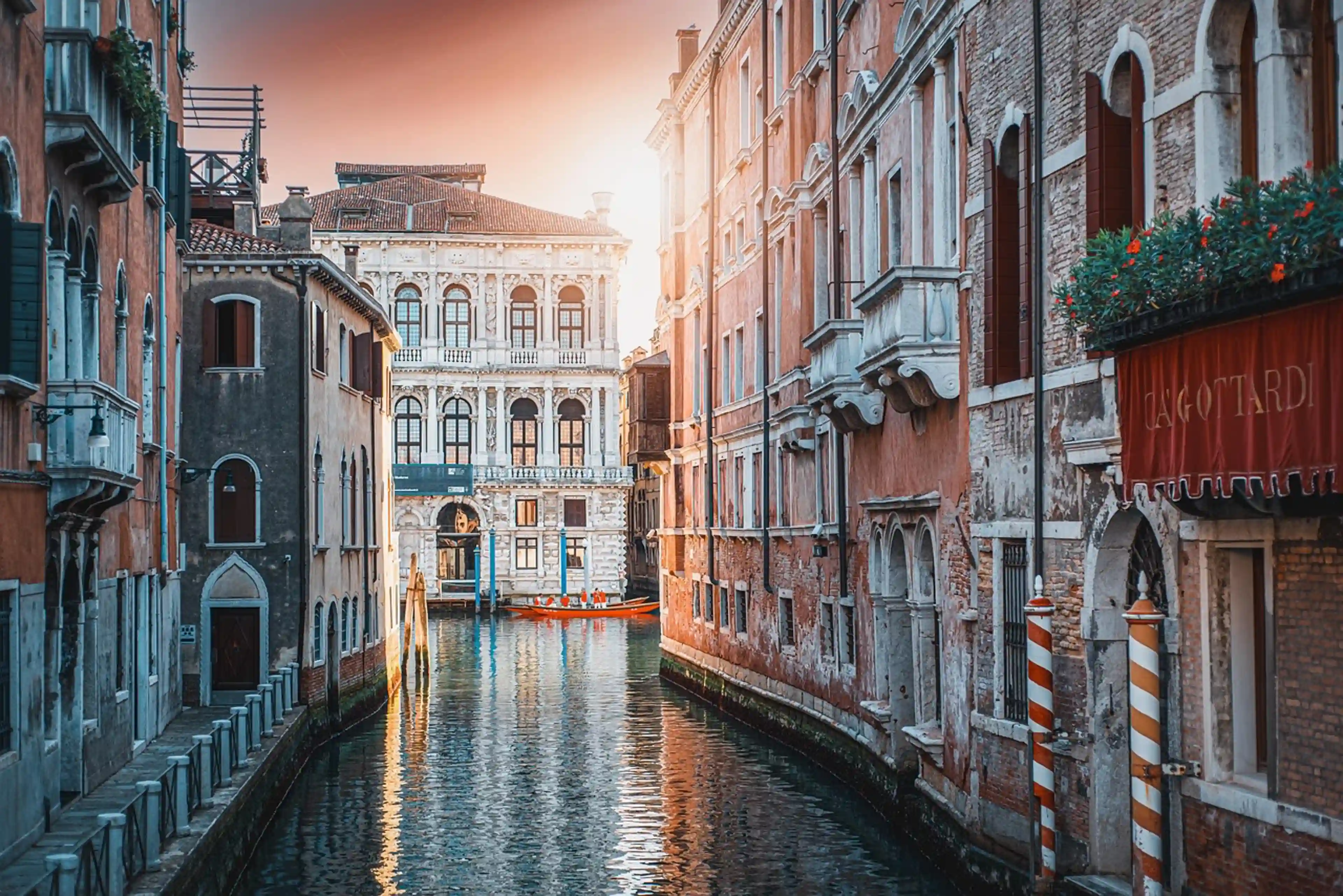Venice
General presentation
Top 50
History, culture & traditions
Travel advice
Wikipedia
Viator activities
Tiqets activities
General presentation
Overall presentation
Venice, nicknamed the "Serenissima", is a unique city in the world built on 118 small islands connected by more than 400 bridges and separated by a network of canals. Founded in the Middle Ages, it was a major maritime and commercial power, playing a central role in trade between Europe and the East. Today, this Italian city is world-renowned for its exceptional architectural heritage, its picturesque canals, its iconic gondolas, and its prestigious cultural events such as the Carnival and the Biennale. This outstanding historical and cultural wealth earned it a place on the UNESCO World Heritage list.
Geographical situation
Located in northeastern Italy, Venice is the capital of the Veneto region. It stretches across the Venetian Lagoon, a body of water of the Adriatic Sea, between the mouths of the Po and Piave rivers. The city is made up of several islands, the main ones being Murano, Burano, and Torcello. The historic center is entirely pedestrian, with canals serving as the main thoroughfares.
Atmosphere and character
The City of the Doges offers a romantic and mysterious atmosphere, with its narrow alleys, lively squares, and winding canals. It is also famous for its festive spirit, especially during Carnival, when the streets fill with traditional costumes and masks. Despite the tourist crowds, Venice retains a timeless charm that captivates visitors in search of authenticity and beauty, among centuries-old palaces and golden reflections on the waters of its canals.
Climate
Venice has a humid continental climate, with cold, damp winters and hot, sultry summers. Average temperatures range from 4°C in January to 24°C in July and August. Rainfall is evenly distributed throughout the year, with peaks in spring and autumn. The city is also subject to the "acqua alta" phenomenon, high tides that can flood certain areas, mainly between November and April.
Best season to visit
May and October are considered the most pleasant months to visit Venice, offering mild temperatures and moderate tourist crowds. However, each season has its particular charm: winter is marked by Carnival in February, while summer hosts major cultural events such as the Biennale and the Film Festival. Note that summer can be very hot and the city is often crowded with tourists during this period.
Access
Venice is served by Marco Polo International Airport, located about 7 km north of the city center. Several options are available to reach the city from the airport:
- Water taxi: about 20 minutes, costing between €110 and €130
- Public Alilaguna boat: about 1h20, costing €15
- Land taxi: 20 to 30 minutes, costing about €30 to €40
- Bus shuttle: 20 to 30 minutes, costing between €8 and €10
It is also possible to arrive by train, with Venice-Santa Lucia station located in the heart of the city.
Internal transport
As the city is pedestrian, the main means of internal transport are:
- Vaporetti: public water buses operated by ACTV, serving different districts and islands of the lagoon
- Gondolas: iconic but expensive, mainly used for tourist rides
- Traghetti: gondolas that cross the Grand Canal at points without bridges, at a modest cost
- Walking: since the historic center is entirely pedestrian, walking remains the most common way to get around
It is recommended to carry a map to navigate the maze of alleys and canals that make up the charm of the lagoon city.
Top 50
Wikipedia
Viator activities
Tiqets activities



